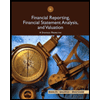
Notes payable:
Notes payable is basically a promissory note wherein the amount mentioned has to be paid. The issuer or the borrower has to interest as well and the issuing company will have an interest factor. It is a general ledger liability account.
In other words, the borrower is bound to pay a certain amount under this agreement to the lender within a stipulated time period along with an interest.
To calculate:
The notes payable on the basis of
Answer to Problem 7E
There is no ending balance at the end of each quarter.
Explanation of Solution
Note: Variables rates for the next quarters
Schedule A: Amortisation of note payable without swap
| Quarter | Payment | Interest | Principal | Balance |
| Beginning | | |||
| March | | | | |
| June | | | | |
| September | | | | |
| December | | | | |
| March | | | | |
| Total | | | |
Note:
Schedule B: quarterly variable versus fixed rate difference
| Quarter | Variable rate | Fixed rate | Quarterly interest | Quarterly difference | |
| Variable rate (A) | Fixed rate (B) | | |||
| June | | | | | |
| September | | | | | |
| December | | | | | |
| March | | | | | |
| Total | |
Variables rates for the next quarters:
Summary of entries debit (credit) over the life of not payable as follows:
| Particulars | Cash | Notes Payable | Interest | Gain(loss) on debt | Swap asset | Gain(loss)on swap |
| Beginning balance | | | ||||
| March | | | | |||
| June Change in value of swap Quarterly difference | | | | | | |
| September Quarterly difference | | | | | | |
| December Quarterly difference | | | | | | |
| March Quarterly difference | | | | | | |
| Ending balance | | | | | | |
CONCLUSION
There is no ending balance at the end of each quarter.
Want to see more full solutions like this?
Chapter 9 Solutions
ADVANCED ACCOUNTING
- I need help with this general accounting problem using proper accounting guidelines.arrow_forwardPlease help me solve this general accounting question using the right accounting principles.arrow_forwardPlease provide the accurate answer to this general accounting problem using valid techniques.arrow_forward
- Please provide the accurate answer to this general accounting problem using appropriate methods.arrow_forwardI need help with this general accounting question using the proper accounting approach.arrow_forwardPlease provide the solution to this general accounting question using proper accounting principles.arrow_forward
 Intermediate Financial Management (MindTap Course...FinanceISBN:9781337395083Author:Eugene F. Brigham, Phillip R. DavesPublisher:Cengage Learning
Intermediate Financial Management (MindTap Course...FinanceISBN:9781337395083Author:Eugene F. Brigham, Phillip R. DavesPublisher:Cengage Learning Financial Reporting, Financial Statement Analysis...FinanceISBN:9781285190907Author:James M. Wahlen, Stephen P. Baginski, Mark BradshawPublisher:Cengage Learning
Financial Reporting, Financial Statement Analysis...FinanceISBN:9781285190907Author:James M. Wahlen, Stephen P. Baginski, Mark BradshawPublisher:Cengage Learning



